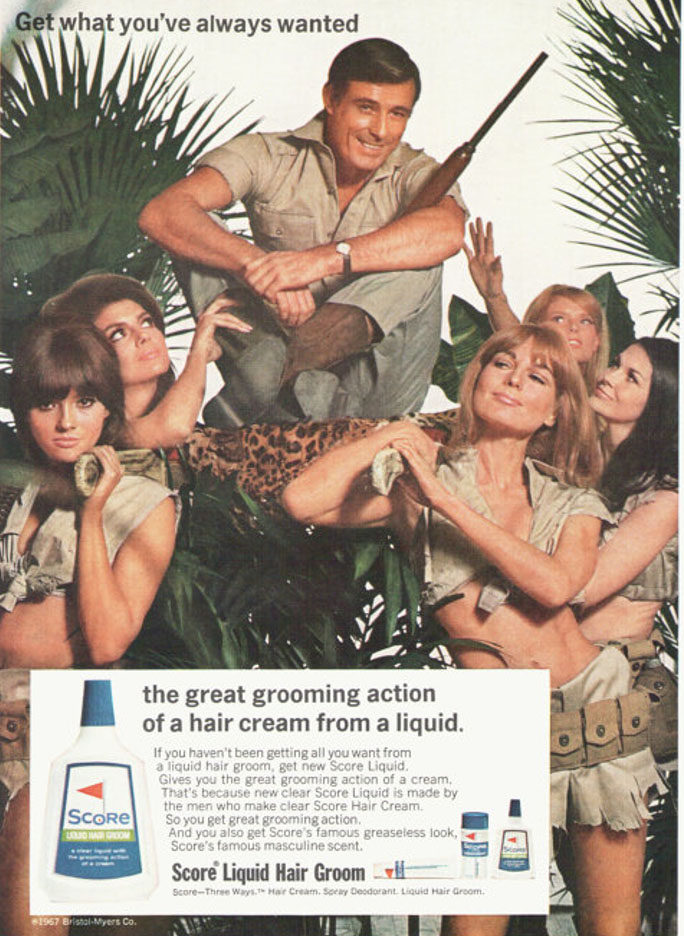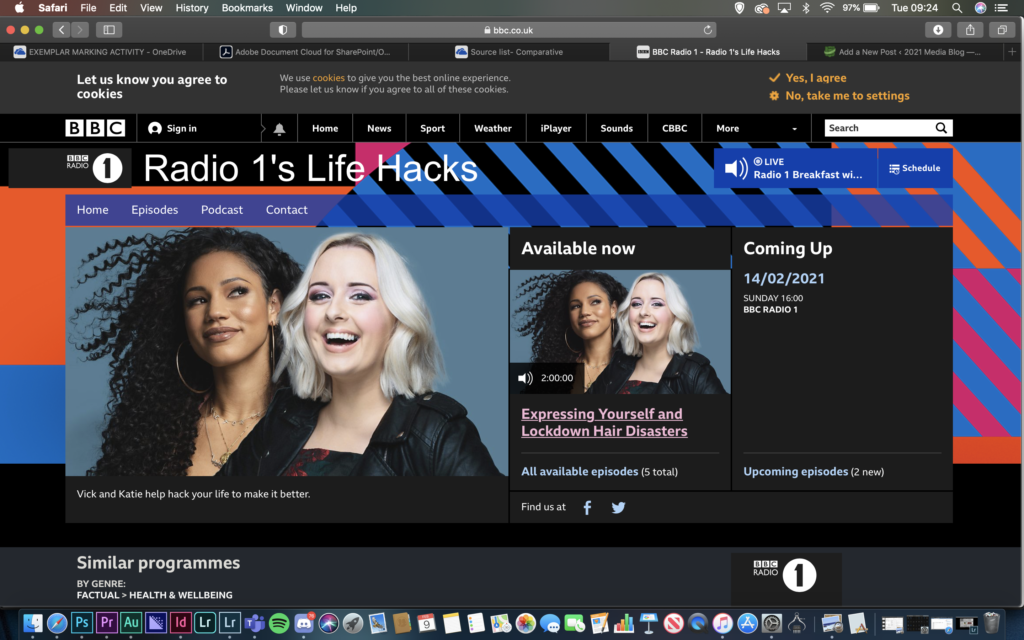
man surrounded by women- to show the power he holds/ royalty, hes placed above them they’re almost worshiping him. One women reaching out for him- he’s superior.
made at the time of the Vietnam war – representing soldiers, making men want to look like male in advert, trying to get men to join army.
holding a gun- creates a traditional view of men where they are expected to be strong, brave and protective. Men are the dominant ones in society, makes him appear powerful.
setting- jungle is a dangerous place that requires a tough male character.
This slogan suggests to the target male audience that using the Score hair cream will result in you becoming extremely attractive to women.
the setting itself is quite bright could represent the scorching sun/ hot weather condition.
male gaze laura maulvey
Jean kilbourne

Jean Kilbourne speaks publicly about how adverts can come across as sexualizing men and women in ‘different way’
Girls get the message from very early on, that whats most important is how they look, that their value, their worth depends on that. And boys get the message that this is what’s important about girls. We get it from advertising. We get it from films. We get it from television shows, video games, everywhere we look. So no matter what a woman does, no matter what her achievements, their value still depends on how they look.
Woman’s bodies continue to be dismembered in advertising. Over and over again just one part of the body is used to sell products, which is one of the most dehumanizing thing you can do to someone. Not only is she a thing, but just one part of that thing is focused on.
“But many people do not fully realize that there are terrible consequences when people becoming things. Self-image is deeply affected. The self-esteem of girls plummets as they reach adolescence partly because they cannot possibly escape the message that their bodies are objects, and imperfect objects at that. Boys learn that masculinity requires a kind of ruthlessness, even brutality. Violence becomes inevitable.”


